“To relieve the suffering…but never to do this by giving…”
The Women’s Industrial Home, also known as the Athens Industrial Home and later, as the Bessie Mell Industrial Home was founded in 1889 by Bessie Rutherford Mell and other women reformers to dispense “charity to the sick and work to the strong among the poor and friendless in the city” (Athens Industrial Home, 1891, p. 11). The founders’ focus was on the residents of Athens Manufacturing Company’s mill village and their neighbors in “the portion of the city east of the river,” and their mission was to provide work, especially to needy women, and to avoid providing charity: “We discountenance in every way, shape and form, mendicancy in all its varied forms and try in every way to encourage all who come within our influence to earn an honest living by the sweat of her brow” (Athens Industrial Home, 1891, p. 14). Bessie Mell and her companions planned “to relieve the suffering…but never to do this by giving, without value received except in extreme cases” (Athens Industrial Home, 1891, p. 14). At the Bessie Mell Home, women who were too old or unwell to stand at factory looms all day could make a little money (and enjoy a hot lunch) by sewing for others.

This passage explains the reformers “industrial plan” through which poor women, also known as inmates, residents, and employees, will generate funds to help themselves and their families through sewing.
Nina Wilkins Scudder papers (ms7), Hargrett Library, UGA
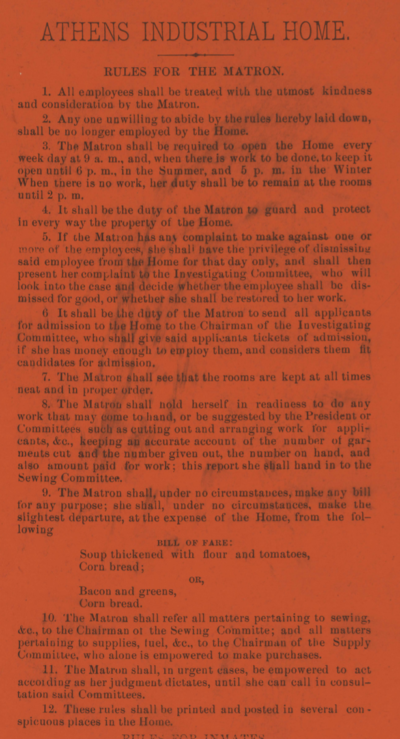
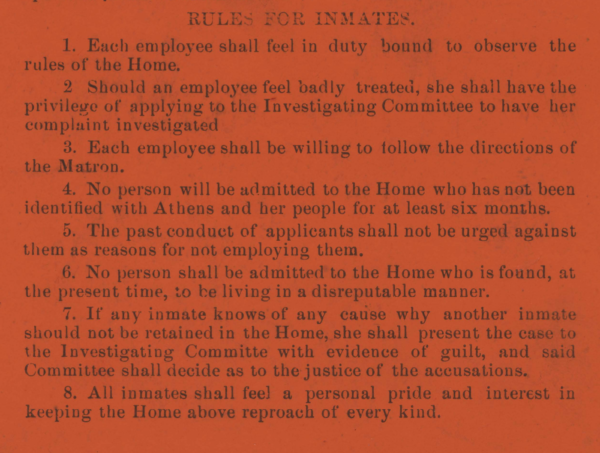
Nina Wilkins Scudder papers (ms7), Hargrett Library, UGA
The women reformers of the Industrial Home were not trained social workers, but they intuitively organized their home in a way that gave the staff—called The Matron—and the clients (usually called “employees,” though sometimes called “inmates”) very clear rules (Athens Industrial Home, 1891, p. 12-13). They also established a number of committees, including, for example, an Investigating Committee that resolved disputes that arose at the Home, and also evaluated the moral character of potential employees. In this way, Bessie Mell carried on the English tradition of distinguishing between the deserving and the undeserving poor.
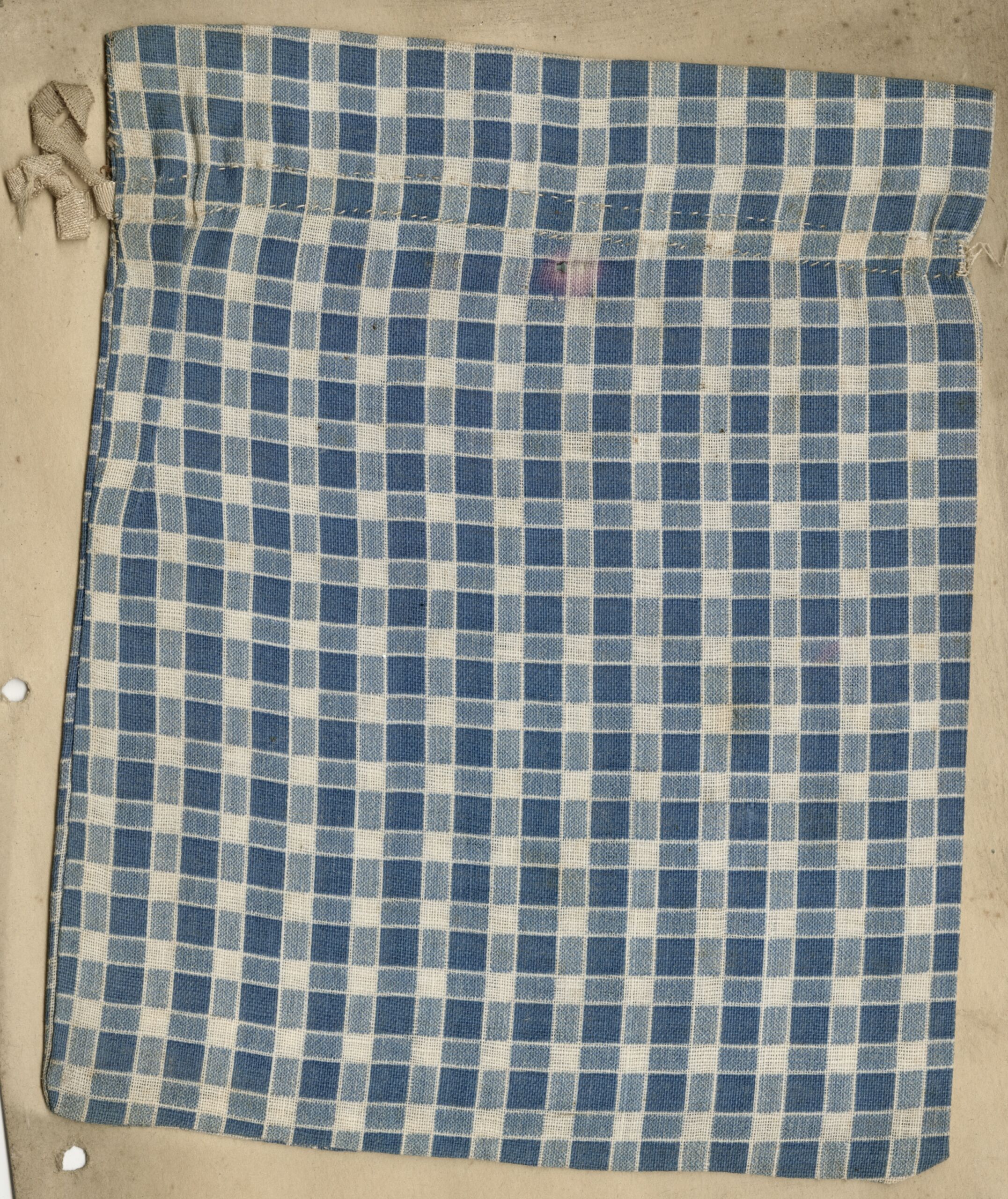
The Bessie Mell Home worked with children as well as women, teaching them sewing and life skills. UGA’s Hargrett Library has a book of samples from the children’s sewing lessons at Bessie Mell. The image on the left is a photo of a 3rd-grade student’s finished “sewing bag.” On the right, 4th-grader Johanna Manglitz demonstrated her tucking, stitching, and hem work.
Heery-Moss family papers (ms4077), Hargrett Library, UGA

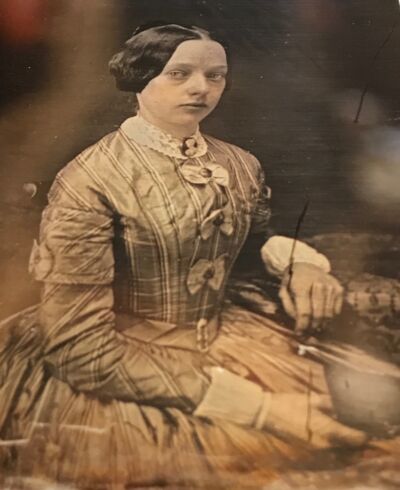
Ann Rodgers Bloomfield (1829-1896) moved with her husband from New Jersey to Athens shortly after their marriage in 1851.
Photograph courtesy of the Bloomfield family
The Athens Industrial Home was opened with support of many prominent Athenians, including the family members of multiple mill owners and investors. Ann Rodgers Bloomfield, wife of Athens Manufacturing Company president Robert Bloomfield, was an officer on the Home’s Board before her death in 1896 (Athens Industrial Home, 1891).
The Women’s Industrial Home was first located at the corner of Lumpkin and Broad Streets, and the 1889 Athens City Directory listed it as the city’s only “Benevolent Institution” (p. 34). The 1893 Sanborn map shows the Industrial Home immediately across Lumpkin Street from UGA’s North Campus. The present-day Chapel, Demosthenian Hall, and Moore College are all labeled.

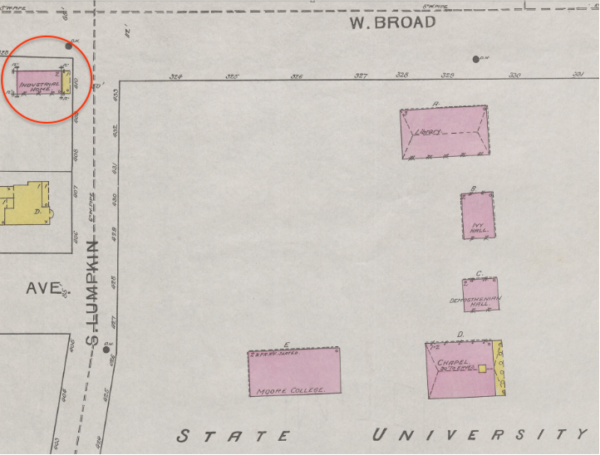
Sanborn Fire Insurance maps for Georgia towns and cities, 1884-1941, Digital Library of Georgia

The Bessie Mell Industrial Home in downtown Athens.
Hargrett Library, UGA
Later, renamed as the Bessie Mell Industrial Home, it relocated to the northwest corner of Thomas and Washington Streets in downtown Athens, an easy walk from the Athens Factory mill village. The 1903 Sanborn map shows that the home was located near liveries, cotton warehouses, a blacksmith, and the synagogue.
Today, this lovely house has been replaced by a parking garage.
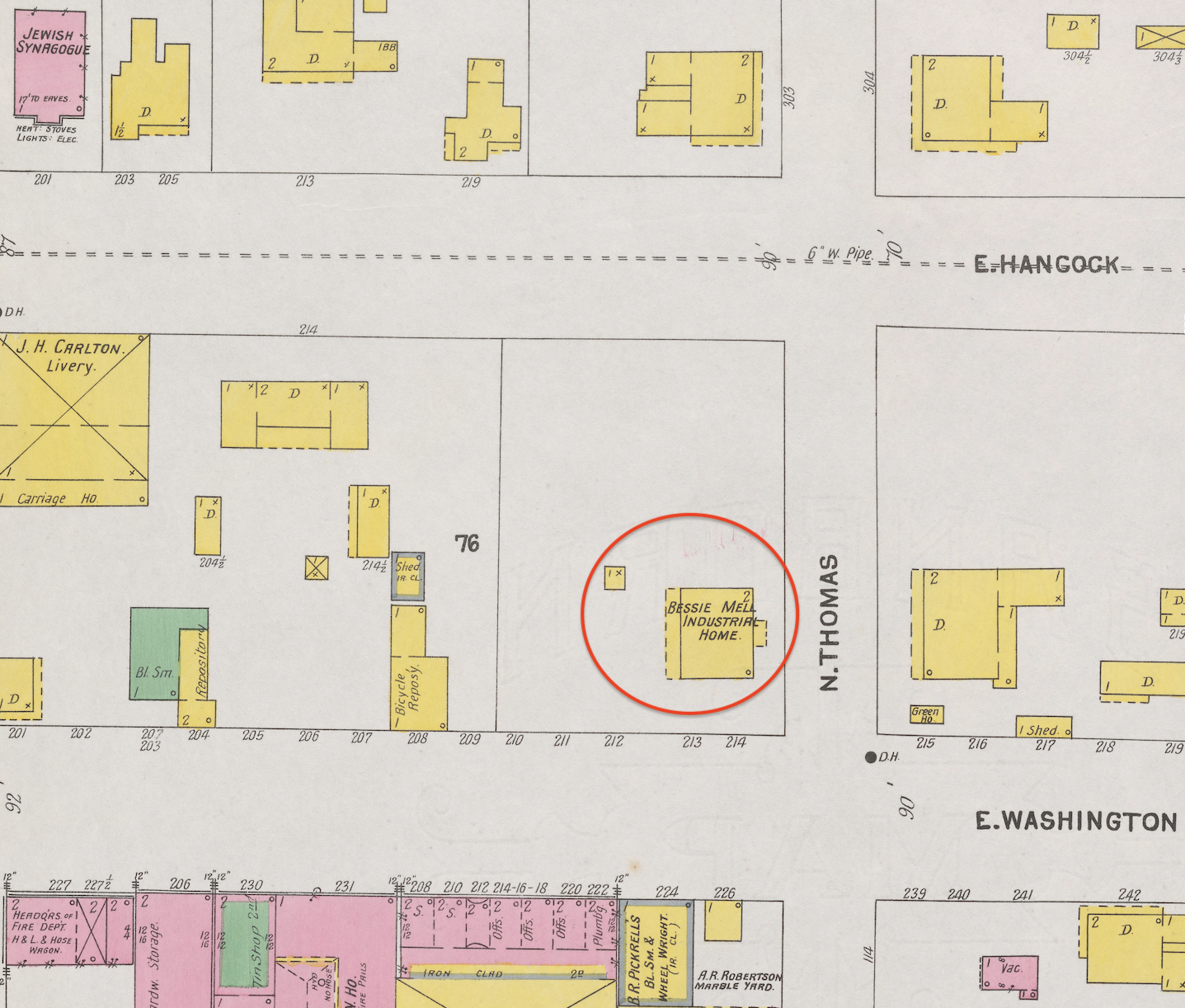
Bird’s eye view of the Bessie Mell Home from the 1903 Sanborn Fire Insurance Map.
Digital Library of Georgia
Unfortunately, Bessie Mell (1855-1894) died at age 39, just a few years after establishing the home, and her supporters immediately renamed the industrial home (whose work went on for at least a dozen more years) in her honor. To understand the success of the Industrial Home and the support it received from the community, it is important to know about Bessie Rutherford Mell’s family. She came from a very prominent Athenian Confederate family, many of whom were devoted to ideals of public service (as they understood it). Two of Bessie’s maternal uncles—Howell Cobb and T.R.R. Cobb—were Confederate generals, and her two sisters, Mildred Rutherford and Mary Ann Lipscomb, both served terms as Principal of the Lucy Cobb Institute, Athens’ prestigious girls’ school, from which all three sisters graduated and where the Confederacy was regularly remembered and celebrated. Mildred Rutherford and Mary Ann Lipscomb were also involved with the Athens Women’s Club and multiple other reform and charitable organizations. Mildred “Miss Millie” Rutherford held leadership positions within the United Daughters of the Confederacy (including Historian), and volunteered with other local women’s organizations, including the YMCA and Bessie Mell Industrial Home. The three Rutherford sisters—Mildred, Mary Ann, and Bessie—grew up on UGA Campus (where their father ,Williams Rutherford, was a math professor) surrounded by local business, political, and intellectual leaders. The former Rutherford House, now called the Treanor House, sits at 1234 S. Lumpkin Street and serves as the office of UGA’s Vice President for Public Service and Outreach. The United Daughters of the Confederacy commemorated Millie’s birthplace with a plaque in 1936, and that monument still stands on UGA Campus.
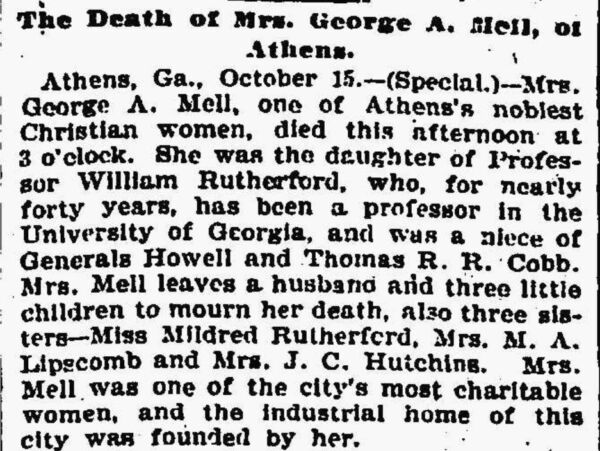
Photo courtesy of Find a Grave

The United Daughters of the Confederacy commemorated Mildred Rutherford’s birthplace on UGA campus with a plaque in 1936.
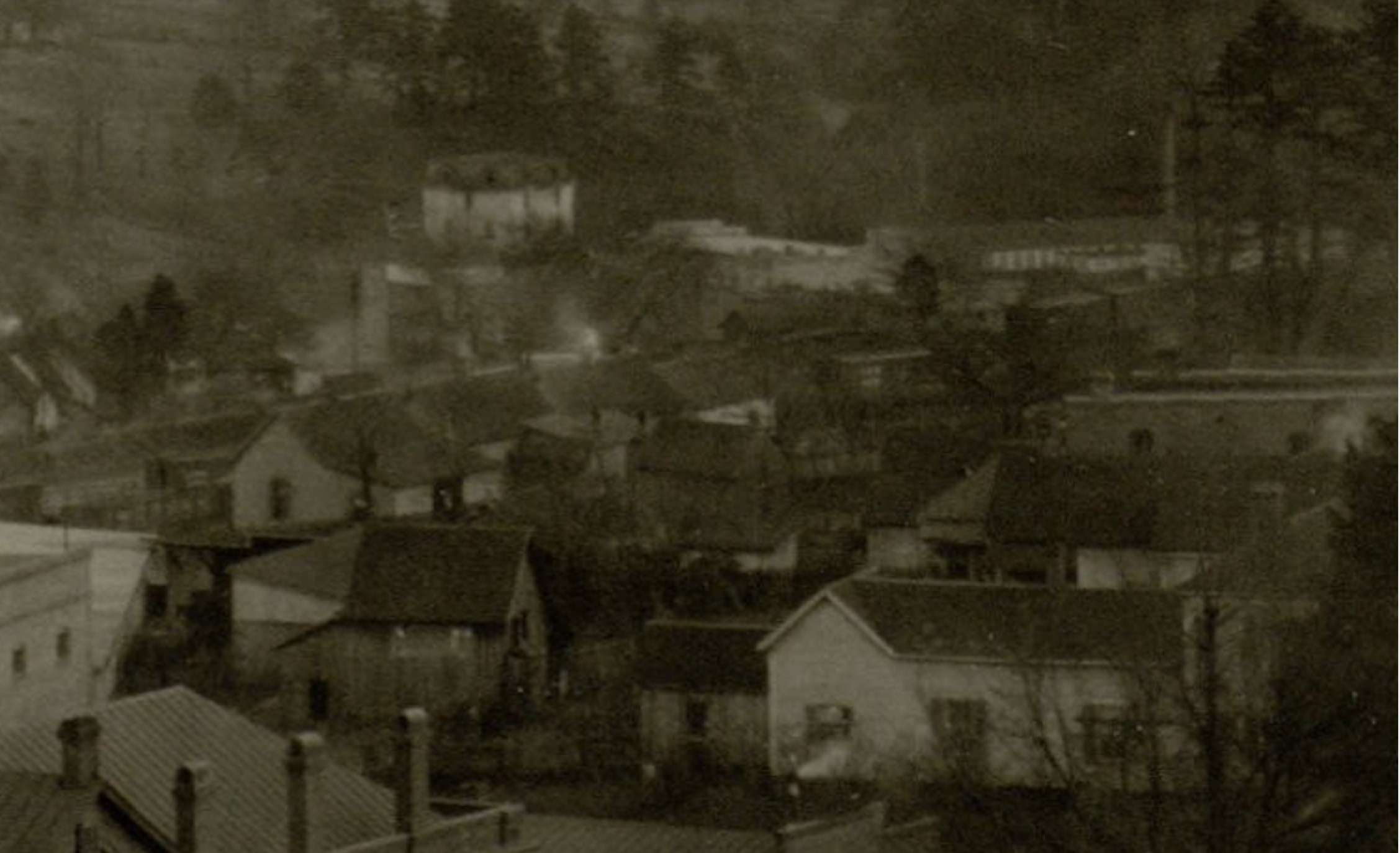
This is a portion of the Athens Manufacturing Company mill village that was served by the Bessie Mell industrial Home. This close-up comes from a larger 1914 panoramic view of Athens.
Cite this Article
McPherson, J. (2024, May 29). Bessie Mell Home. Complex Cloth. https://complexcloth.org/bessie-mell-school/
Sources
Athens City Directory. (1889). M.C. Pope & Co. Athens, GA. https://dlg.usg.edu/record/dlg_acd_acd1889
Athens Industrial Home. (1891). The Biennial Report, Constitution and By-Laws of the Athens Industrial Home with Plans for its Proposed Enlarged Work, Feb. 14th, 1889, to Jan. 1st, 1891. Nina Wilkins Scudder papers (ms7), Hargrett Library, University of Georgia, Athens, GA.
